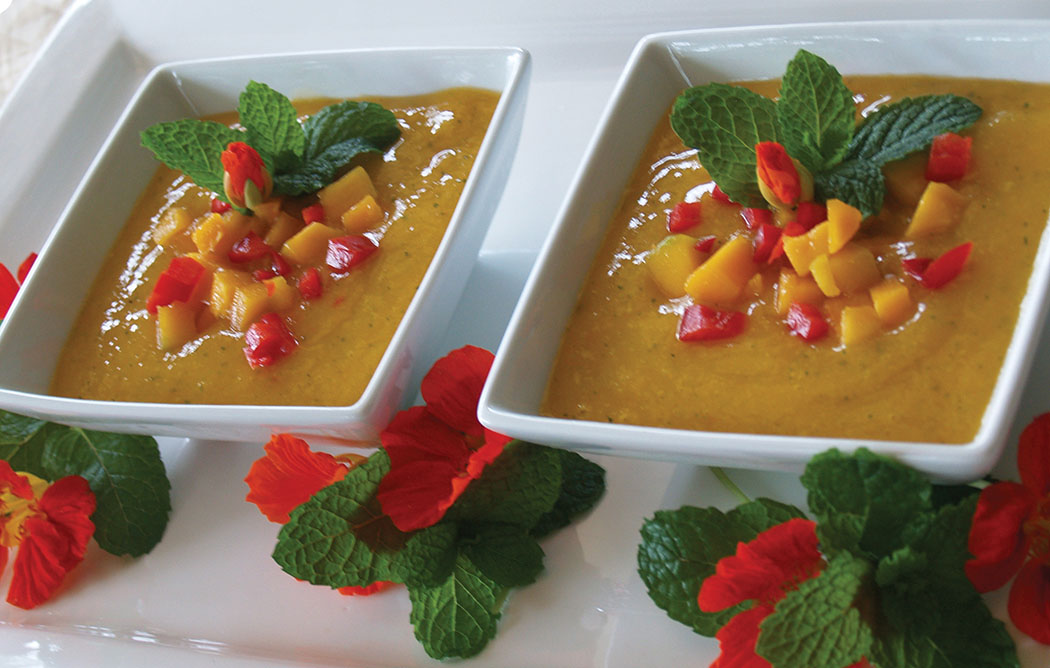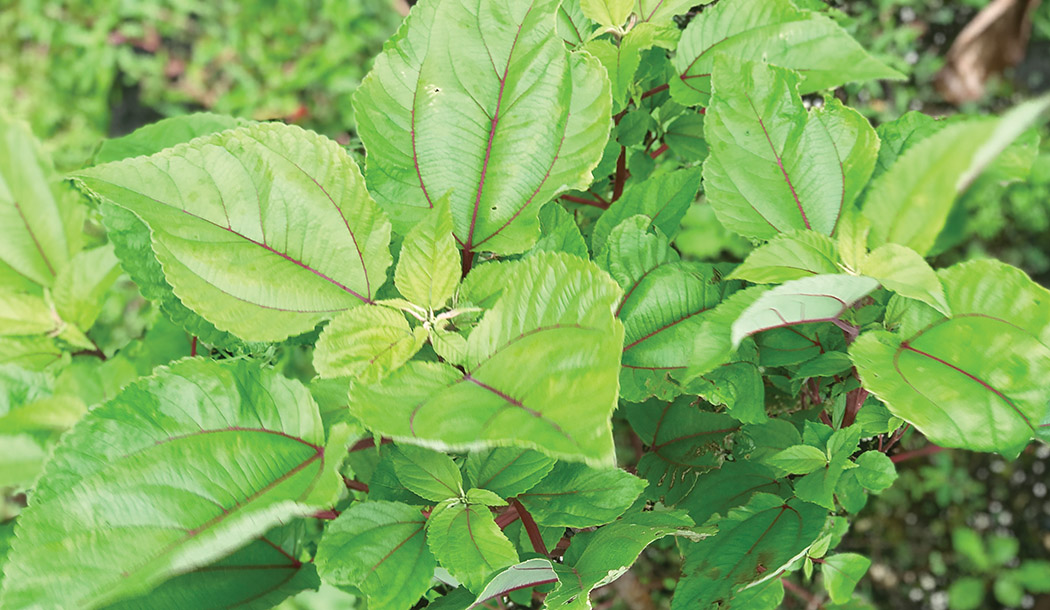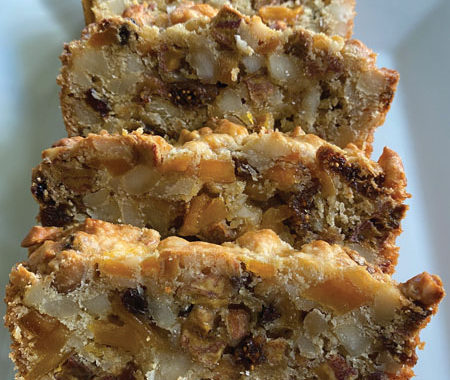Mangoes
 By Sonia R. Martinez
By Sonia R. Martinez
The mango (Mangifera indica), a native of Southeast Asia and India is a member of the Anacardiaceae family, which includes cashews, pistachios, poison ivy, and poison oak. The tree was transported to the Philippines and other Pacific tropical islands by early travelers. Spanish and Portuguese sailors took trees to Brazil, Central America, and the West Indies, where the trees immediately made themselves at home.
The mango was brought to Hawai‘i in the late 1800s, and can now be found in many backyards.
The fruit has been cultivated for more than 6,000 years, and there are more than 50 known species and 400 varieties throughout the world. The four best-known varieties are the Tommy Atkins, Keitt, Kent, and Haden, although there are many more delicious varieties available today.
Mangoes contain a large amount of vitamin C, as well as vitamins A and B6, and fiber.
Select a ripe mango by feel and smell; don’t be swayed by the color. Mangoes will ripen in different colors: some will blush, some will be a uniform yellow color, some might even turn slightly purplish in the rounded stem end, and yet some varieties will stay completely green when ripe. The aroma of the stem end can also detect ripeness: the stronger the aroma, the riper the fruit. Your selection will also depend on how and when you will be using it. The fruit should be firm, with no soft spots, and have a slight ‘give’ when squeezing gently. Do not refrigerate until completely ripe and ready to use.

After they ripen, mangoes can be peeled, cubed, and stored in plastic bags for several days in the refrigerator or for up to six months in the freezer.
If you tend to break out from contact with certain plants, such as poison ivy or oak, be cautious when touching a mango for the first time. Some people suffer allergic reactions from contact with the resinous latex sap that drips from the stem end after harvesting.
Many people agree that the best way to eat a fresh mango is to just eat them out of hand while leaning over a sink with the juices running down your chin!
Mangoes are also suitable for making jams, chutneys, and pickles. They are wonderful in salads and salsas, entrées combined with chicken or pork, smoothies, ice cream, ambrosia, and desserts such as mango bread pudding, tarts, and trifles. Mango-based sauces pair wonderfully with grilled shrimp or seared scallops.
Gazpacho is a traditional Spanish and Portuguese cucumber and/or tomato-based soup served chilled. I have tasted and made several variations of gazpacho and love them all. Three years ago at the Second Annual Mango Festival, I experienced Mango Gazpacho for the first time—it was like tasting summer!
After playing with several recipes I found on the Internet and a mango cookbook, I came up with my own favorite version of this truly tropical refreshing summer soup. This recipe is very forgiving, so adjust the ingredients to your own taste.
 A ‘Taste of Summer’ Mango Gazpacho
A ‘Taste of Summer’ Mango Gazpacho
3 cups fresh mangoes, peeled and cubed
1 1/2 cups freshly squeezed orange juice, pulp and all
2 Tablespoons extra-virgin olive oil
3-4 Tablespoons fresh lime juice
1 small seedless cucumber
1 small to medium sweet Maui onion
2–3 medium garlic cloves
1 Tablespoon—heaping—freshly grated ginger
2 red-hot Hawaiian chile peppers, seeded
2–3 Tablespoons fresh mint, chopped
1/2 teaspoon Hawaiian sea salt, or to taste
When peeling a mango use a very sharp bladed knife so you can peel as close to the surface as possible without cutting into the pulp. Peel and cut over a large bowl or measuring cup so you can catch all the juices. After cutting the pulp from the seed, scrape the seed with the blade of your knife or vegetable peeler to catch every bit of pulp and juice.
Process all ingredients in blender until puréed. You might have to do it in batches, depending on your equipment. Taste and adjust seasonings, then blend again. If you prefer stronger mango flavor use a bit more mango or less orange juice.
Pour into a pitcher and chill in refrigerator for several hours. The longer it sits the better, although not longer than overnight.
Serve in a pretty bowl, glass stemware, or shot glasses and garnish with ingredients listed below or choose your own favorites.
Toppings and Garnish
1 small red bell pepper, seeded and diced small
1/4 cup mango, chopped
Mint sprig
Yield: 6 regular servings or 16 shot glass servings ❖
The Fifth Annual Mango Festival is Saturday, July 20 from 10 am–5 pm at the Sheraton Kona Resort & Spa at Keauhou Bay. Contact information: 808.334.3340
Photos by Sonia R. Martinez
Contact writer Sonia R. Martinez: SoniaTastesHawaii.com


